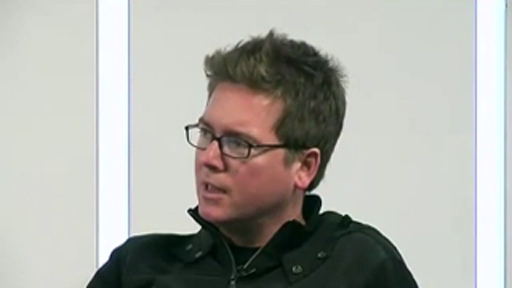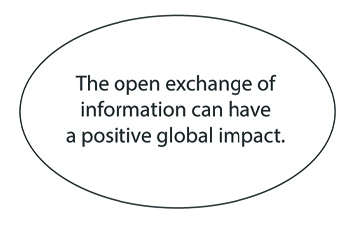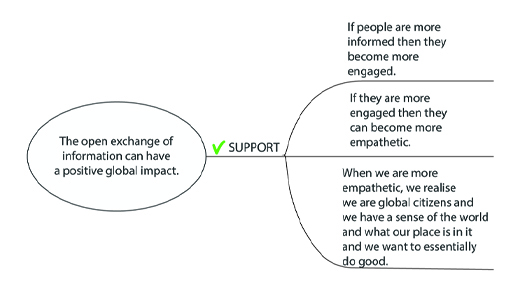3 The open exchange of information
Keen’s view is very pessimistic. Others have argued for the benefits of social media and, especially, the free flow of information that is made possible by social networks such as Twitter. For example, Biz Stone, co-founder of Twitter, has expressed the argument for the free flow of information very succinctly.

Listen to Biz Stone make his argument in the following video.

Transcript: Video 1
Here is the text of Stone’s argument:
[…] I realised that that became then something we were working towards which was this idea that the open exchange of information can have a positive global impact, the idea that when we say ‘positive global impact’ we can break that down and you can say if people are more informed then they become more engaged, and if they are more engaged then they can become more empathetic. They are able to understand something that is happening halfway around the world in a uniquely different way; they are able to walk in that person’s shoes. And when we are more empathetic, we realise we are global citizens and we have a sense of the world and what our place is in it and we want to essentially do good.
Although Stone’s argument is succinct, it does hide a sophisticated structure. To map that structure, we can use an idea from Session 6 first. There you saw that connecting words and phrases (such as because, despite, and, but, so, due to, etc.) can give you important clues about how claims are connected. Before you attempt to map Stone’s argument, it is helpful to first identify those connecting words and phrases.
Activity 2 Spotting the connecting words and phrases
Identify the connecting words and phrases in Stone’s argument. Copy the text of the argument to your favourite text editor or word processor and highlight the connecting words and phrases in bold.
Discussion
The connecting words and phrases are marked in bold below. There are five in total.
I realised that that became then something we were working towards which was this idea that the open exchange of information can have a positive global impact, the idea that when we say ‘positive global impact’ we can break that down and you can say if people are more informed then they become more engaged, and if they are more engaged then they can become more empathetic. They are able to understand something that is happening halfway around the world in a uniquely different way; they are able to walk in that person’s shoes. And when we are more empathetic, we realise we are global citizens and we have a sense of the world and what our place is in it and we want to essentially do good.
The second stage is to map Stone’s argument, one level at a time.
Activity 3 Mapping Stone’s argument
Now, you can start applying the recipe, one level at a time. Apply the first step to obtain the argument map at level 0.
Discussion
Stone starts by putting forward the main claim. This claim is introduced by the phrase ‘this idea that’. This gives you an initial argument map (Figure 7).
The remaining argument contains three connecting phrases: ‘If’, ‘and if’ and ‘And when’. These phrases signal three claims. Each of these claims takes the conclusion of the previous claim somewhat further.
Schematically speaking, you have:
- If more informed, then more engaged
- If more engaged, then more empathetic
- If more empathetic, then global citizens (= sense of the world, what our place is in it, and do good).
Together the three claims support the main claim that the open exchange of information can have a positive global impact in the sense that ‘we realise we are global citizens and we have a sense of the world and what our place is in it and we want to essentially do good.’
Because these three if/then passages constitute a chain (of the form If A, then B. If B, then C. If C, then D), they are grouped under a single support relationship (Figure 8). On their own, these claims do not provide support for the main claim. Only when grouped together do they back the main claim
The second supporting claim is followed by a bit of explanation. Immediately after the term ‘empathetic’ has been used, Stone explains that ‘They are able to understand something that is happening halfway around the world in a uniquely different way; they are able to walk in that person’s shoes.’
We chose not to include the explanation on the argument map. The explanation does not introduce a new claim. Rather, it elaborates on the supporting claim that ‘if they are more engaged then they can become more empathetic’, by defining one of the terms that is used in that claim.
Biz Stone’s argument came from his involvement with Twitter. In the next section, you will learn about another digital technology, the Tor network. The argument around Twitter focused on the benefits of the free flow of information. The argument around Tor that you will study focuses on the ability of the security services to monitor and track information flows.


